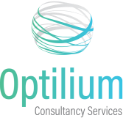Accelerating Revenue Growth: Are you flying blind?
In recent weeks I’ve been highlighting some common mistakes organisations have been making in transforming to a truly customer-centric business.
As the cliché says, “what gets measured gets done” and many organisations have a plethora of internal measures and metrics against which they judge the performance of their business. But when we take an outside-in view of the business, data and KPIs are often sadly lacking.
Regardless of leadership’s best intentions, customer-centric plans frequently fail without proper measurement and monitoring mechanisms in place. This doesn’t mean you need hundreds of KPIs. A small number of well-chosen metrics, reviewed consistently at senior levels, can drive significant change.
One of the most pressing issues is that leaders are often given historical data, such as attrition rates, when it’s too late to act. Rear-view mirror reporting needs to be replaced with radar-like insights, providing early warnings and allowing leaders to act proactively.
3 Key Blind Spots in Becoming Customer-Centric
I want to call out three specific blind spots relating to monitoring and managing customer-centric behaviours that I’ve witnessed across many businesses I’ve worked with:
🚧 Lack of common customer-related targets across the organization
A simple but powerful method of unifying customer focus is to create and align cross-company goals. For example, it is common to see marketing and sales teams with completely unrelated key performance indicators despite the fact that one team is obsessed with creating campaigns, collateral, and hot leads and the sales teams are dedicated to closing business using their content. Both teams should share the same sales income or profit targets. Proposition development teams design with much more purpose when their own performance is judged against success with customers rather than product development milestones.
On a softer point, it’s also helpful for all people across the organization to understand exactly how their own role links directly, or indirectly, to helping customers’ lives.
🚧 Failing to measure the lifetime value of customers
Perhaps the question I ask that seems to give CRO’s the most difficulty in answering is ‘who is your most important customer?’. The first response often relates to the ‘biggest’ customer…and then, after some tap dancing, I’m faced with a number of rhetorical questions about value, tenure, brand etc. Given the single most important asset in any organization is the customer, failing to define, measure and track the value of that asset is a fundamental blind spot.
The specific calculation of Customer Lifetime Value (CLV) can be created from a variety of metrics such as margin, value of future opportunities and probability of churn, and should be tailored to the specific needs of the business and industry. Importantly, CLV is a key enabler for a range of initiatives such as segmentation modelling, marketing strategies, communication planning, customer loyalty, resource optimization and investment planning.
🚧Building key performance indicators that don’t matter to customers
A common mistake boards make is to ponder at meetings over customer satisfaction scores. Furthermore, they then spend valuable time ascertaining what clever gymnastics they can execute to improve the score by the next board meeting to make everyone feel good about their ‘progress’. They may even compare themselves to their industry peers and set a goal to be in the upper quartile. No customer cares about these specific scores – but they do care about doing business easily with your organization. If customer satisfaction was your own real passion, you should be setting a goal to be the best in the industry, not simply to be the best of a poor bunch within your own industry sector.
Instead, dashboards should contain the types of KPIs customers might have written down themselves – usually the “why” behind the customer satisfaction scores. Examples might relate to how quickly you respond, how fast you resolve problems, how quickly you supply them etc. They should also include some qualitative metrics such as the reasons behind dissatisfaction, satisfaction, complaints etc. Board meeting conversations should focus on plans to address these areas of opportunity and track the initiatives that underpin them.

In summary, many businesses are obsessed with tracking financial performance, shareholder value, and any number of internal initiatives. And of course these are important. But if we acknowledge that THE primary purpose of any company is to enrich the lives of customers then we need to formalise how we track and steer the organisation within this agenda. Ensuring we have KPIs that align with our customers’ needs such as response time, problem resolution speed and overall service experience. As a result, these customer-driven metrics provide actionable insights and can guide meaningful improvements, ensuring the company is truly focused on enriching the customer experience.
🚨CRO Revenue Scorecard – LAST WEEK TO USE FREE OF CHARGE🚨

Check how prepared you are for revenue acceleration by taking the scorecard (it takes less than 5 minutes!). Receive a free personalised report to provoke thought and kick start your planning.

